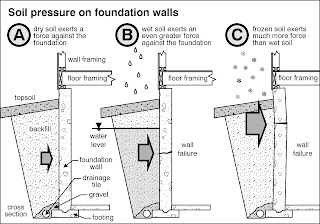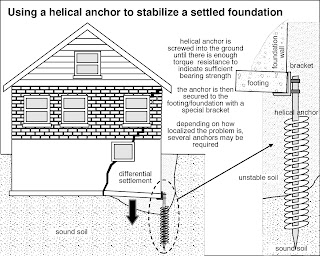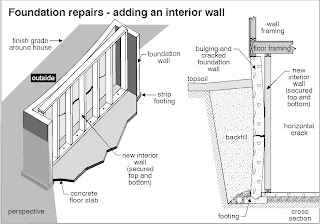We're well into May already, so it's time to talk about spring cleaning.
I know, I know, now you have to start cleaning the windows and beating down the rugs. It's going to be a long day, but isn't it always great to start the year off fresh and new?
However, spring cleaning should not just be limited to the usual airing out the home and packing old belongings away into boxes for the summer garage sales, no. Something that every home owner should consider when you break into your spring routine is regular home maintenance. This is a good time to do an annual check to make sure your home is still running smoothly and that the appliances and various structures around the home are still going to serve you faithfully for the years to come. Not only functionally, but aesthetically as well.
If you own or rent an apartment or condominium, some of these may apply and some you may have to speak with your building manager, landlord or condo board about seeing to some of the maintenance checks down below.
There are many things to look at, and we've provided a comprehensive list to get you started.
Why not start by taking a walk around your house?
To maintain a quality image of your home, make sure to check if the
exterior of your home is clean and well painted. After months (or years) of rain, snow, wind and who knows what else, the outside of your house may have taken something of a beating. Normally it takes about five or six years for a home's paint-job to start to wear thin, but if you notice loose paint you should sand it off. Use this walk around as a chance to
inspect the caulking (sealant) as well. Since caulking helps control the inflow of outside noise and to prevent heat loss and moisture damage in the home, it is important that if you see any deteriorating areas to scrape it out and reapply new sealant to the area.
While you're doing this walk around be sure to
check your window and door sills for similar issues. The caulking may need reapplying there as well, or bent frames may need replacing. You should also be looking to ensure the
door screens are clean and
if there are holes that need to replaced to prevent insects or other pests from coming indoors. After all, it doesn't take a big space for a mosquito to climb in and make themselves right at home. It follows to double check that the door fits in the frame correctly, leaving no spaces along the frame where it may be crooked or warped. You'll let
out heat and let
in bugs with an unsecured door, and can also be an issue for your home's security as well.
Next, it would be a good idea that if the weather is agreeable, to
clean out your gutters and downspouts. Gutter neglect can be common because you don't necessarily see everything that gathers up in there, but there can be costly structural damage if they're not regularly maintained. Too much debris can cause the troughs to sag or become unsecured. It's also important to
see that
there aren't any damages in the gutters as you're cleaning them such as leaks or sagging, and to make sure the
downspouts are secured to the side of the house. If you're unsure if an area is damaged, run a hose through to ensure that it's draining properly.
Since you're up there, you might as well check your roof out. Now, as a rule of thumb
you should not climb onto your roof, and if you have major concerns you should contact a licensed professional to look at it for you. A damaged or aged roof can be dangerous and can do you more harm than good. Call a Home Inspector or Roofing Professional to do it for you! Don't take an unnecessary risk.
However, from up on a ladder you should be able to
inspect the flashings for damages,
and if there are any problems with the style of roofing. For asphalt damages you are looking to see if there are any asphalt granules collecting in the eaves, or curling of the shingles, which is a clear sign of aging. For wood, considerable warping in the roof could be a symptom of wood rot. Metal roofs come in many different styles so they each have different signs of wearing or aging, but you would most commonly look for rusting or corrosion. Also to be sure to
check for wear on all interruptions on the plane of the roof such as chimneys, vent pipes, and etcetera. As mentioned previously, if you notice any grievous issues with your roof, call a professional to do a more in depth investigation. Safety first!
Now,
if you have a deck, you should try to have it treated every couple of years (along with wooden fencing if you have it). Decks take a lot of weather wear in general, but they also take on pets, children, guests that you may have over, and yourself. If the stain is looking dull or the wood is muddy-grey, make sure to have it retreated.
Give it a wash with a pressure washer and make sure to replace or fix any damaged boards. Not only can it be an eyesore, but brittle or warped boards can cause a major safety hazard for you and anyone on the deck.
Last, but certainly not least, it is imperative that you check the landscape and foundation of your home. While most may want to just fertilize their lawn and be done with it, you should
look to make sure that the ground around your home slopes away from the foundation. If it is level or worse yet, inverse, this can cause pooling of moisture against these walls and seepage/leaks can occur in your basement to cause significant water damage.
And then you can fertilize your lawn.
And weed it, trim it...you know. The works. Keeping vegetation around your home trimmed can prevent scratching off the paint or damaging the siding.
Another word of advice about maintaining the landscape around your home would be to not fall victim to the current trend of paving over your front or back lawn. Lawn maintenance may be laborious and tedious and more room for more cars may sound preferable but it can have serious detriments. Vegetation helps to naturally and effectively drain water, and the more lawns that are converted into driveways, the more likely there will be an occurrence of flooding. A little bit of extra convenience may end up costing you heavily, as flood damage can not just cause detrimental water damage to your basement, but also ruin stored valuables or even ruin the foundation of your home forcing it to be condemned.
The flood in 2013 caused over 5 billion dollars in property damages and also cost many people their homes and belongings, so keep it in mind before you pave the yard over. When water was nowhere to go, its going into your home.
But after all that, that's all! You've just done a top to bottom check on the outside of your house, now you can make it presentable for that garage sale we were just talking about. Remember, maintaining your home will not only ensure that it will last a lifetime for you and your family, but it will mean that if you ever plan to sell your home it will be more attractive to buyers. You will also be more likely to pass a conditional home inspection, since these are just some of things we keep an eye out for when looking at your house.
If you aren't sure about what needs doing around your home, you should call HomeCrafters Home Inspection Services - we will be happy to go through the checklist for you!













